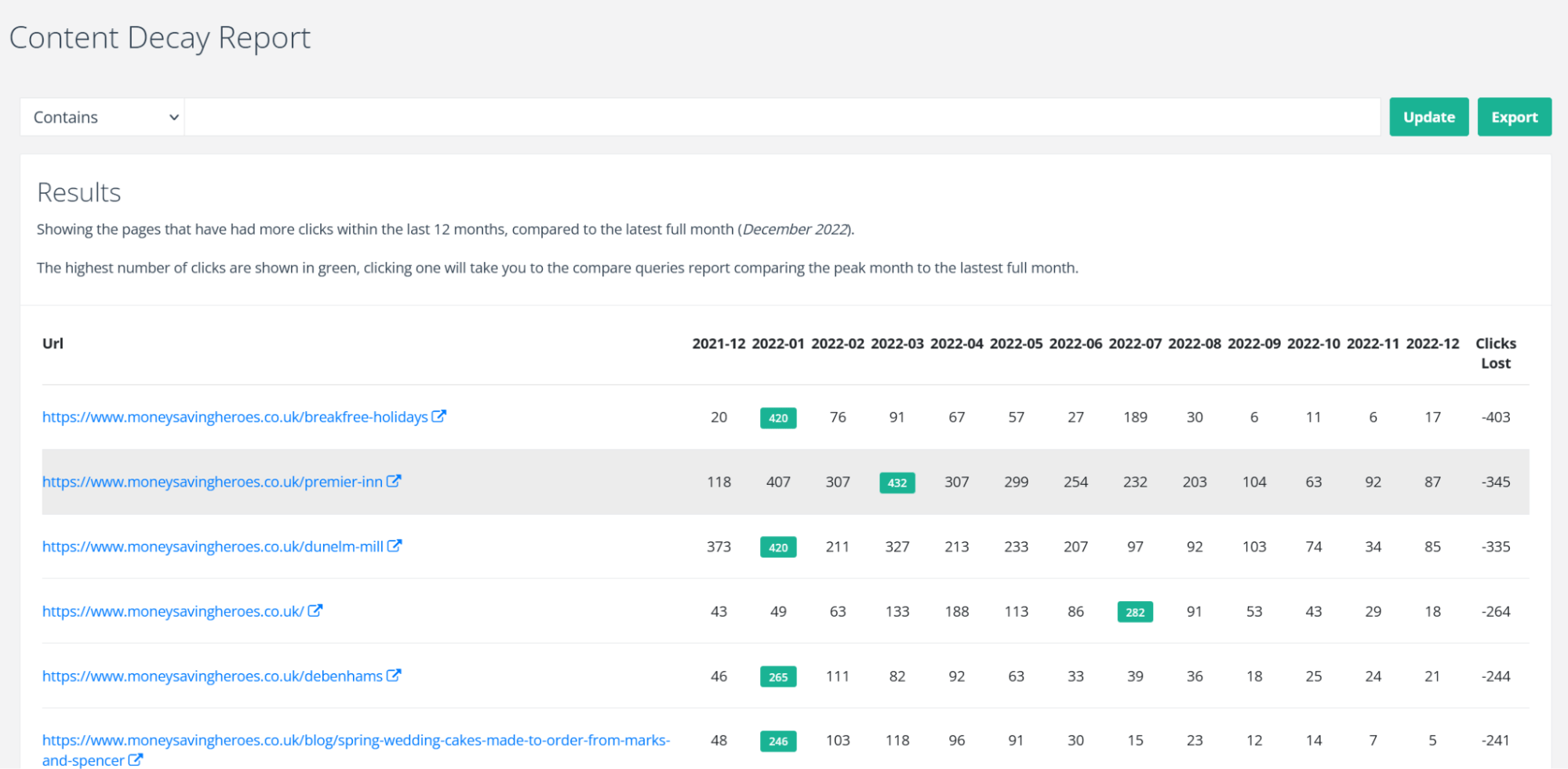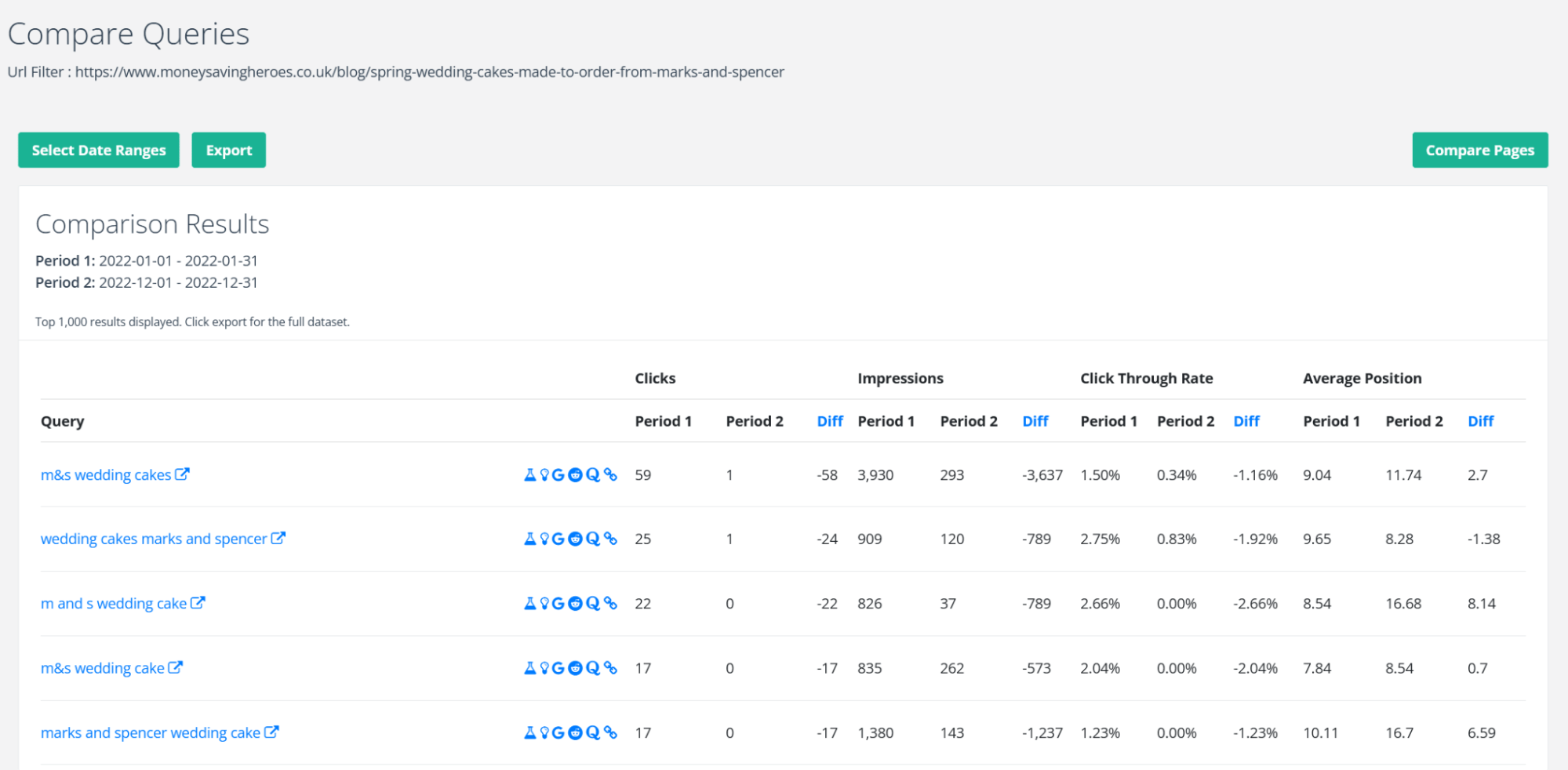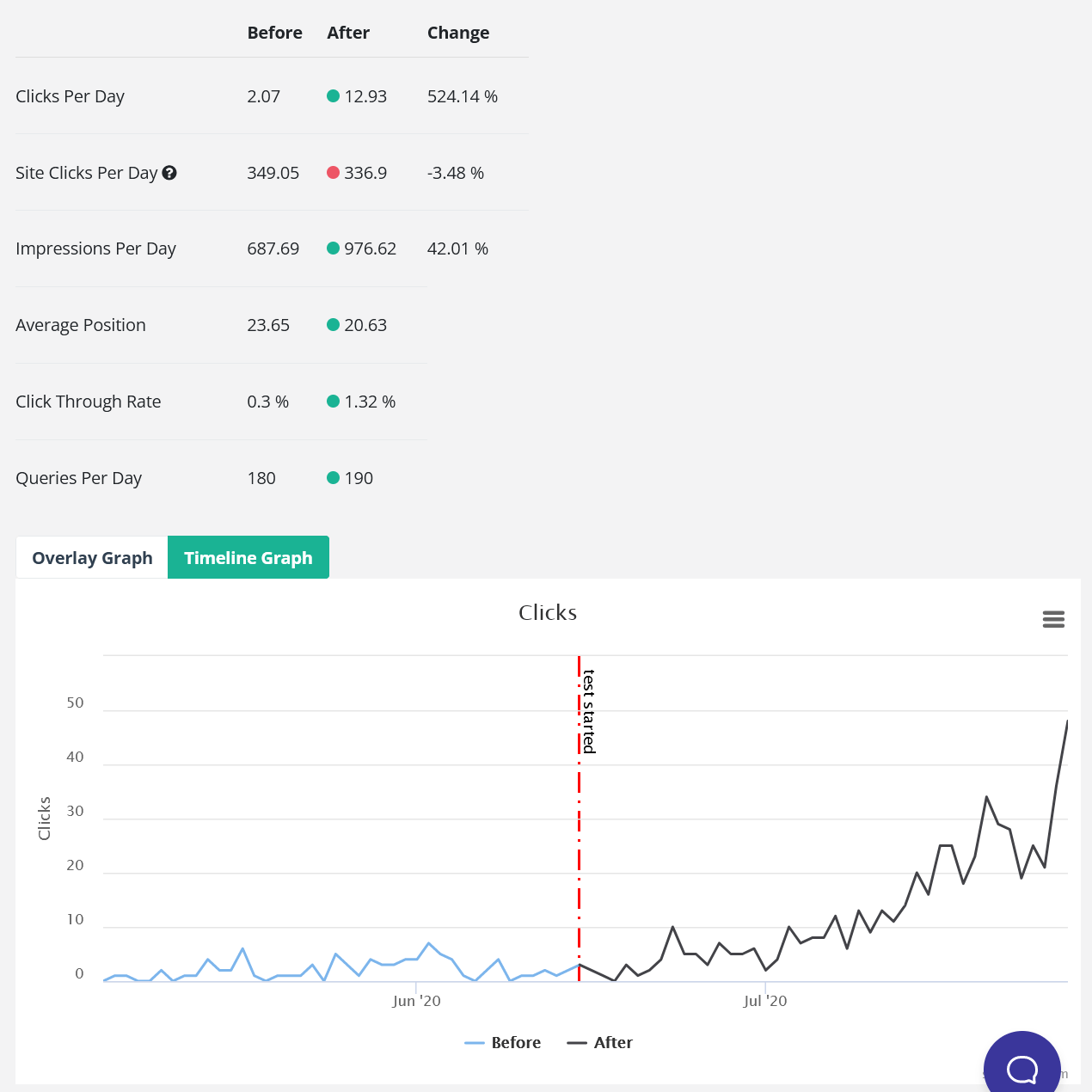A content decay report will look at the historical SEO performance of pages on your site and let you know which ones have suffered from an ongoing decline in clicks from Google’s organic search results.
The content decay report in SEOTesting uses the data from Google Search Console. For each page on your site, it groups the data monthly across the last 13 months.
It then calculates the difference between the [peak month] – [last calendar month].

The content decay report highlights the peak month for each page in green.
Using the peak month, we can see the pages that have lost the most clicks. We then need to use our SEO, analytics skills, and industry knowledge to decide whether this is a seasonal page or a content decay issue.
You can discount pages that target seasonal queries and topics such as ‘best Christmas jumpers’, although a refresh each September or October would probably do some good!
Once you have found a page that has suffered from content decay, you will want to investigate the queries to see which, in particular, have dropped.
From within the Content Decay Report in SEOTesting, you can click on the peak month (the number highlighted green), and you will be taken to the Compare Queries report with the data preloaded for the peak month vs. the last calendar month.

This lets you see which specific queries have lost the most clicks for this page.
Now your content refresh process can begin.
Why Does Content Decay?
We know that Google likes content to be kept up-to-date, relevant, and factually correct. Rather than constantly publishing new pages, a solid SEO strategy is to revisit and update your existing content. Especially those pages that are trending downwards from a peak.
There are several reasons why your pages suffer from content decay:
- Freshness is a ranking factor
- Relevance
- Competitors
- Search intent
Freshness As A Ranking Factor
We know that different topics and queries use different ranking factors. Content freshness is a ranking factor that may affect the SERPs you are targeting.
The easiest way to check whether content freshness is a ranking factor is to perform a Google search for the target keyword and see how recently the content in the top 10 positions was updated. If all the results have been updated in the last 6 months, I suggest you regularly refresh your content targeting this SERP.
Relevance
Is the content up to date regarding the facts and any statistics it mentions?
Are any external links still relevant?
If the content contains incorrect information, it is a big red flag to humans reading it (user-based signals such as bounce rate, scroll depth, time on page) and computers (Google).
Update your content with the latest facts, information, and news to best inform the users reading it.
Competitors Publishing Better Content
It’s a competitive world out there, and other sites will always be trying to outrank you.
They’ll do this by creating content that is better than yours. Study the SERPs and the page’s ranking. If you see a more helpful way of explaining or presenting information, look to utilize it and refresh your page.
Search Intent Changes
As Google’s algorithms learn more about a topic or keyword and the user’s intent around it, Google may change the types of content it returns in the SERPs.
Google the keyword you are targeting and ensure the type of content on your page is matching the kinds of content Google ranks on page one of the results.
Be Careful With Content Quality
Be careful not to dilute content by adding fluff and filler words just as a tickbox exercise to say a content refresh has been performed.
Any updates should improve the article’s usefulness in the eyes of the user reading it.
How To Measure The Results Of A Content Refresh
Time-based SEO testing is a great way to measure the results and effectiveness of a content refresh on a particular page.

You can either look up the data manually in GSC, or use SEOTesting to create the time-based test and track the data automatically.

